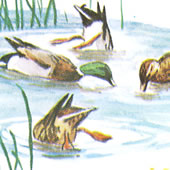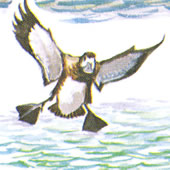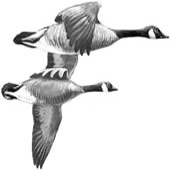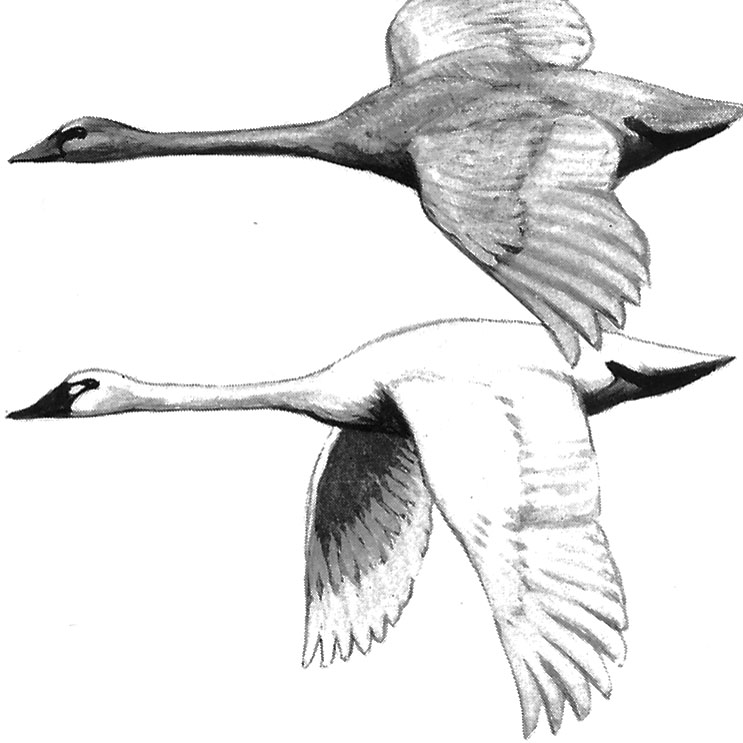Waterfowl
Migration Patterns - Flyways
The term "flyway" has long been used to designate the migration routes of birds. For management purposes, four waterfowl flyways—Pacific, Central, Mississippi, and Atlantic—were established in the United States in 1948. To varying degrees the waterfowl populations using each of these flyways differ in abundance, species composition, migration pathways, and breeding ground origin. There are differences, also, in levels of shooting pressure and harvest.
For the most part flyway boundaries follow state lines. However, the boundary between the Pacific and the Central flyway general follows the Continental Divide.
There are some problems in matching waterfowl migration corridors with flyway boundaries because some species nest and winter in areas that do not occur along a north-south axis. These species cross flyway boundaries during migration. On balance, the present arrangement is useful in that it permits reasonable management of waterfowl. At some future time, it is possible that further rearrangement of boundaries may permit better management of the waterfowl resource.
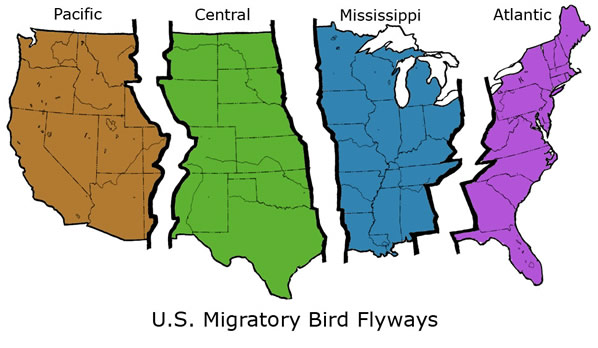
Flyway Councils
Flyway Councils
In 1952, Flyway Councils were formed in each of the
four flyways. The Council in each flyway is made up
of representatives from the wildlife agencies of the
states in that flyway—one representative from each
state. The Councils study flyway problems, develop
waterfowl management recommendations, and
generally work closely with the U.S. Fish and Wildlife
Service in implementing waterfowl management and
research programs.
Plumage

Changes in Plumage
Most ducks shed their body feathers twice each year. Nearly all drakes lose their bright plumage after mating, and for a few weeks resemble females. This hen-like appearance is called the eclipse plumage. The return to breeding coloration varies with each species and in individuals of each species. Blue-winged teal and shovelers may retain the eclipse plumage until well into the winter.
Wing feathers are shed only once a year; wing colors are always the same.
Waterfowl information is courtesy of U.S. Fish and Wildlife Service, Federal Duck Stamp Office Presents North American Waterfowl

